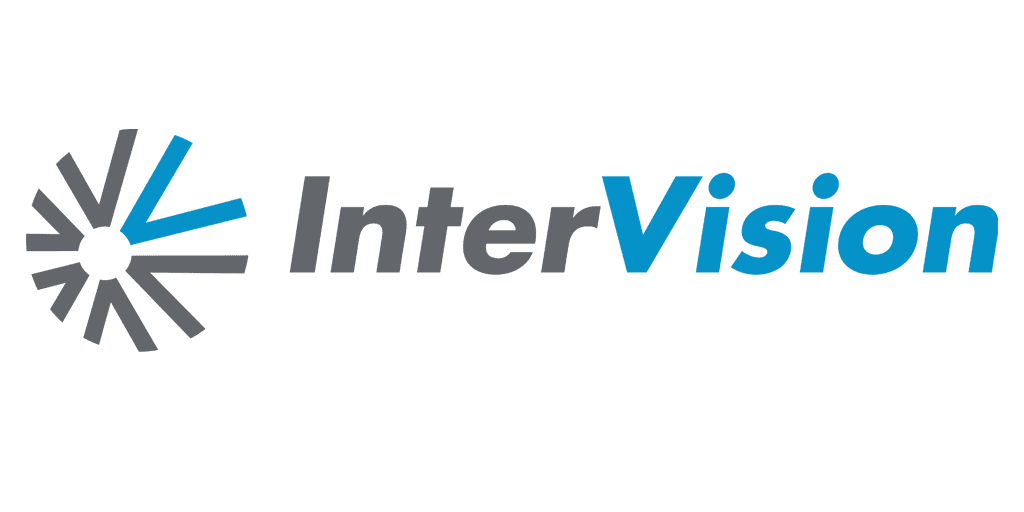Within the past decade, more and more businesses are relying on a Unified Communications as a Service, or UCaaS, platform. These are cloud-based, flexible, and scalable tech stacks for cross-company collaboration. The COVID-19 pandemic has especially accelerated adoptions of UCaaS, with businesses needing to accommodate remote work while a return to in-office, “normal” operations is far from a certainty. In fact, from 2021 to 2028, the compound annual growth rate (CAGR) of the UCaaS market is expected to grow by nearly a quarter, with 23.6% anticipated growth.
In this article, we’ll look at some UCaaS examples and examine how UCaaS can transform business operations today with solutions that are versatile and largely future-proof.
What is included in UCaaS?
When it comes to what is included in UCaaS, a few examples of essential functions include:
- Telephony services, including call forwarding, call recording, and advanced call routing
- Video services to accommodate one-to-one as well as multi-participant video conferencing
- Internal instant messaging for real-time chat
- Workplace collaboration tools for scheduling, messaging, and project management
- Cloud-based hosting and delivery via private cloud or secure data center
Another way to understand UCaaS on a level that goes beyond just “unifying communications” is through defining its main components. So, what are the 3 main components of unified communications?
- User interface
This is the digital space where your employees work. An effective UCaaS platform will streamline internal communication and collaboration tools.
- Integration with voice
UCaaS solutions incorporate existing telephony into remote working setups and collaborative environments.
- Presence
Collaboration and communication are greatly enhanced by something rather simple: visibility into whether fellow employees are online and available—or if they’re busy or otherwise unavailable.
The real power of UCaaS software isn’t merely in its inclusion of communication channels and features, but also in these channels’ agility and versatility. For example, imagine being able to quickly tweak call routing preferences or go from instant messaging to a voice call with the click of a single button.
UCaaS vs VoIP
Voice over Internet Protocol, or VoIP, is best thought of as a precursor to UCaaS. VoIP enables internet-based phone calling, meaning a regular landline or mobile network is not needed. VoIP converts analog voice signals into broadband-broadcasted digital signals. Developed around 1995, VoIP offered businesses a way to save money on long-distance and international charges.
So, what is the difference between VoIP and UCaaS? In recent years, VoIP providers have evolved to include features that go beyond mere calling—basic call routing, forwarding, presence, and transfer, for example. Ultimately, the difference comes down to the fact that UCaaS providers offer much more advanced and diverse functionality than just VoIP—starting with the integration of additional communications channels.
Examples of how UCaaS benefits organizations
UCaaS platforms offer many advantages for organizations that are looking to enhance or overhaul their communications stack, whether replacing VoIP or on-premises-based unified communications. A few benefits of UCaaS in these cases include:
- A lower total cost of ownership across communication tools in the cloud
- Advanced video and videoconferencing functionality
- Increased productivity and an improved customer experience
Additionally, UCaaS adoption brings benefits to the workforce that rely on the platform for their day-to-day responsibilities, including:
- Cloud-based unified communications including voice, video, live chat, and more
- Accessibility to accommodate remote and hybrid work environments
- Simple integrations with systems like CRM and email
Companies that are growing and trying to keep up with new technologies and evolving customer preferences find success with UCaaS, as well. Specific benefits include:
- Flexibility and scalability, made possible because UCaaS features are hosted in and delivered via the cloud
- Easiness to increase users or services with predictable billing impact because UCaaS is often billed on a per-user and per-function basis
- The ability to integrate APIs to incorporate new features to keep up with changing customer preferences and expectations
UCaaS vs CCaaS vs CPaaS
While their abbreviations are similar and some of their features overlap, there are, in fact, differences between UCaaS, CCaaS (Contact Center as a Service), and CPaaS (Communications Platform as a Service). Let’s make sure these distinctions are clear:
UCaaS and CCaaS are both cloud services that include multiple communication channels, automation to increase agent productivity, flexible and scalable technologies, and reliable security. Where they mainly differ, then, is in what they’re built to accomplish—UCaaS streamlines internal communication and collaboration, while CCaaS is designed to refine the customer experience through connected communication channels.
Communications Platform as a Service (CPaaS), then, has more in common with CCaaS than with UCaaS, but shares many similarities with both. Another cloud-based delivery model for adding new communication channels to existing offerings, CPaaS offers a way to customize a communication stack through integrations with existing technology. Rather than offering a full, all-in-one platform (like UCaaS), CPaaS providers instead supply application programming interfaces (APIs) and code snippets to add features to the existing stack.
Finding the best UCaaS providers
The UCaaS market is growing, and will continue to grow, offering unique benefits to businesses of any size or type.
UCaaS provider comparison: Leaders
Gartner, a technology research and consulting firm, takes a granular approach to differentiating UCaaS platforms, ultimately organizing them into one of four quadrants. These quadrants are based on “completeness of vision” and “ability to execute.” Companies designated as “Leaders” are those that rate highly on each of those two criteria. The five providers that placed as Leaders are RingCentral MVP, Microsoft Teams, Zoom, Cisco UCM, and 8×8.
RingCentral
RingCentral’s UCaaS platform, MVP, makes them the largest UCaaS provider by market share. The name, MVP, refers to the integration of Message, Video, and Phone capabilities into what was previously known as RingCentral Office.
Microsoft
Since adding Calling functionality to Microsoft Teams, Microsoft has become the second-biggest UCaaS provider. Their product is built on integrations for versatility, is compatible with on-premises telephony infrastructure, includes monitoring and reporting features, and adds voice and telephony to the familiar Microsoft Teams platform.
Zoom
While Zoom has been a familiar service for about 10 years now, with the COVID-19 pandemic, Zoom has become a verb. Is Zoom a UCaaS platform, though? More than simple video conferencing, Zoom now includes many sophisticated features that make it a bonafide UCaaS provider. They continue to prioritize the hybrid workforce, recognizing that the world of work may never fully return to “how it was” pre-pandemic.
Cisco
Cisco offers UCaaS through their Unified Communications Manager (UCM). The Cisco UCM Cloud service provides call control and session management functionality that is reliable, secure, and scalable.
8×8
Like other top providers, 8×8 has a solid reputation for UCaaS features and support. Aligning with 8×8 gives organizations access to deployment specialists and IT experts to keep their services working like they should.
The Visionaries, Challengers, and Niche Players
A few examples of UCaaS providers that make up the other three quadrants are listed below, since companies within all four quadrants are capable of meeting many organizations’ UCaaS needs:
- Visionaries, companies who “understand where the market is going or have a vision for changing market rules, but do not yet execute well,” include Fuze (as the lone Visionary for 2020).
- Challengers “execute well today or may dominate a large segment, but do not demonstrate an understanding of market direction,” and examples include LogMeIn and Mitel.
- Niche Players, like Vonage and Dialpad, are companies that “focus successfully on a small segment, or are unfocused and do not out-innovate or outperform others.”
We’d certainly encourage you to do a little more research, and not select a provider based on the bullet points above. The reality is, a number of UCaaS providers include comparable feature lists, so thinking more about your particular industry or use case is essential in selecting the platform to underpin your efforts.
Buying considerations
What follows are some examples of the types of questions to ask prospective UCaaS vendors.
Will it save us money?
Transitioning to a UCaaS model usually provides substantial cost savings, since these solutions don’t require particularly complicated installation or implementation processes. And cost savings over an on-premises type setup, specifically, saves on equipment and maintenance costs. UCaaS-leveraging companies also benefit from the subscription-based model, which makes costs consistent and easier to budget for.
Will it make work more efficient for employees?
The last thing you want to do is throw another piece of new technology at employees without establishing clear value first—otherwise, it risks feeling like “one more thing” they’ve got to learn to work with, rather than something that is intuitive and provides instant benefits. By integrating all communication channels into a single interface, UCaaS centralizes communication and pertinent information, making it all accessible in real-time.
Will it accommodate remote work?
One of the biggest advantages to UCaaS is its agility—users (and features) can be easily added or changed, and because the communication channels make use of cloud infrastructure, the remote work experience is largely identical to non-remote work environments.
Is the technology likely to meet evolving needs, for 2022 and beyond?
The agility of UCaaS goes well beyond just remote work accommodation. In addition to the flexibility for remote/non-remote work, UCaaS also features the scalability to grow with your business, whether that means new users, channels, or both.
Is the technology reliable?
Any duration of downtime or disruption is costly. UCaaS makes use of geo-redundancy to store all relevant data in multiple, concurrent data centers. If one goes down—for any reason—the system automatically pivots to make use of a different server, without service interruption. And when you align with a particular UCaaS vendor, a huge portion of the work associated with configuration, provisioning, and system maintenance is offloaded to the vendor.
What happens in case of disaster?
You want to know exactly what to expect in the event of significant disruption. UCaaS systems offer robust disaster prevention and recovery practices, leveraging additional, backup power systems in case of an outage.
Is the platform secure?
UCaaS systems make use of advanced security measures to keep data absolutely safe. These include data encryption, VoIP call security, two-factor authentication, and fraud prevention measures. The providers adhere to strict compliance requirements and undergo regular audits to ensure continued compliance.
Managed Services
In some cases, the prospect of jumping to a UCaaS platform for the first time can feel overwhelming. Beyond just understanding how UCaaS works, there are other considerations, as well—not the least of which is the reality that IT teams tend to be pretty lean, with tight budgets.
It’s no wonder that demand for managed services continues to grow. When you partner with a trusted provider offering managed UCaaS services, it demystifies the process and helps ensure a smooth and effective transition, as well as on-demand troubleshooting beyond implementation, throughout the daily use of the products.
Adopting a managed services UCaaS provider unlocks many benefits, including:
- The ability to focus more on core business objectives, less on the platform
- Access to reliable expertise for implementation, configuration, and more
- Predictable costs for better budgeting
- The ability to scale up or down as needed
- Access to on-demand support and troubleshooting
- The ability to offload security and compliance
- Avoidance of costly downtime or disruption
The managed services approach also helps with business continuity concerns by streamlining the configuration, implementation, and support processes with a single point of contact. Managed services providers are experts in tailoring product offerings, features, and processes to unique business needs, a sort of concierge-type service.
Realize your IT vision, with InterVision
InterVision has over 25 years experience as a strategic service provider. We provide Microsoft, Cisco, and 8×8’s UCaaS offerings via a managed services model, saving you money and managing vital maintenance. Our specialty is in getting to know your business, and then helping you select (and implement) the technology that will best advance your business today and prepare you for the future of tomorrow.
Whether you envision UCaaS delivered in the cloud, hosted on-premises, or a hybrid approach, we’ve got you covered. Consider opting for managed services with InterVision for guaranteed costs savings of 30%, not to mention the efficiency and reliability of expertly-managed UCaaS services.
Check out our website to learn more about transforming your datacenter with a purpose-driven cloud strategy, modernizing communications to keep employees connected, hardening resiliency to protect against threats and eliminate downtime, and unleashing your data with machine learning and artificial intelligence—and then let us know when you’re ready to talk!
Want to learn more? You may also be interested in these blogs …
UCaaS: Past, Present and Future
UCaaS Providers
CCaaS Companies
Knowledge is power
Our experts have compiled research and recommendations to help you better understand threats, protection, and solutions.












